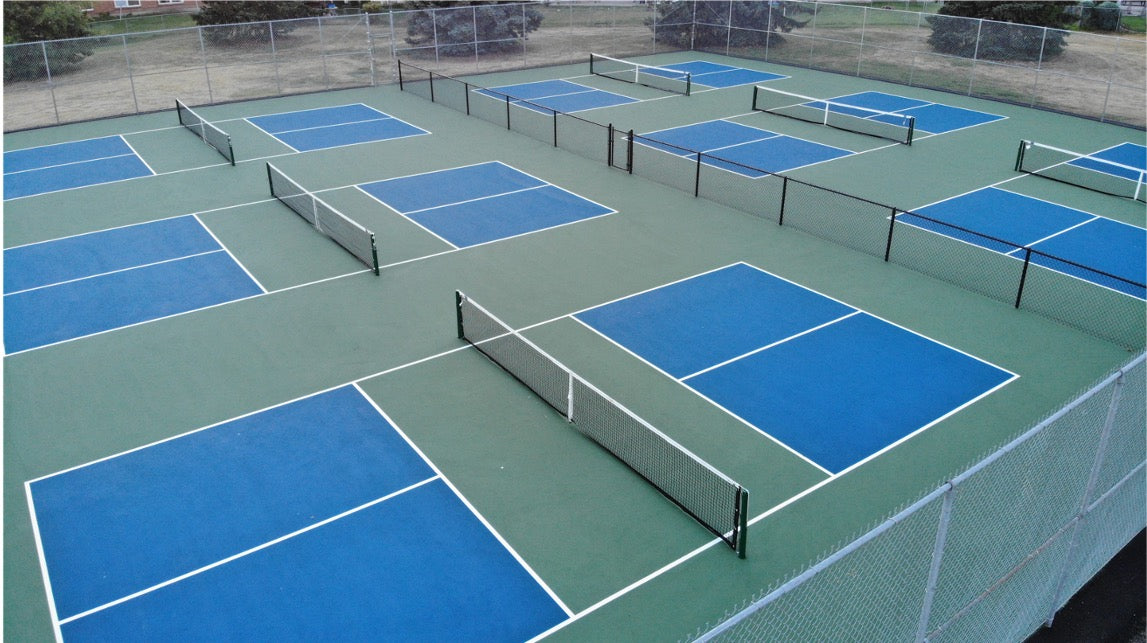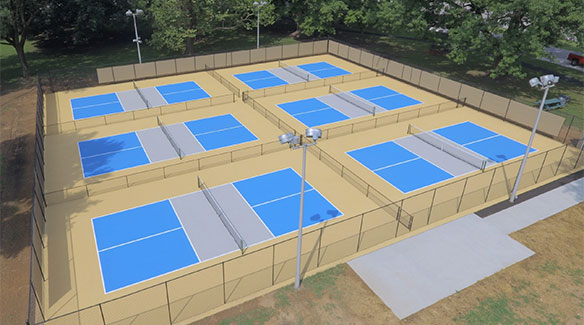Usual Mistakes to Avoid in Your Pickleball Court Construction Process
Usual Mistakes to Avoid in Your Pickleball Court Construction Process
Blog Article
Navigating Rules for Pickleball Court Building And Construction in Your Location
Constructing a pickleball court in your location calls for a nuanced understanding of different neighborhood policies, consisting of zoning legislations, building authorizations, and safety requirements. Involving with local authorities and the area is crucial for guaranteeing compliance and fostering assistance.
Recognizing Regional Zoning Laws
When thinking about the construction of a pickleball court, comprehending regional zoning laws is essential to making sure conformity and avoiding possible legal problems. Zoning guidelines determine just how land can be used and typically consist of requirements associated to recreational centers. These regulations can differ significantly by district, impacting elements such as court placement, illumination, size, and sound degrees.
Before starting building, it is important to get in touch with the regional zoning board or planning department to ascertain the specific policies that use to your residential or commercial property. Certain zones might limit entertainment activities, while others may call for details authorizations or adherence to specific guidelines. It is also important to consider setbacks, which establish just how far structures should be from home lines or other structures.
Furthermore, personal developments, such as home owner organizations (HOAs), might impose their very own policies concerning the building and usage of pickleball courts. Comprehending these regulations can protect against expensive alterations or litigation down the line. Involving with regional stakeholders and neighborhood participants can supply important understandings and foster support for your task, making certain that it lines up with the area's assumptions and requirements.
Acquiring Necessary Building Allows
How does one navigate the complexities of getting required structure licenses for a pickleball court? The process starts with understanding regional laws and needs stated by municipal authorities. Normally, you will need to send a comprehensive site plan that describes the proposed court dimensions, materials, and layout. This plan must follow zoning legislations and any particular laws pertaining to leisure facilities.

When permits are gotten, it is essential to comply with any kind of evaluation timetables and requirements throughout the building stage. Maintaining communication with neighborhood authorities will help with a smoother authorization procedure and aid prevent possible setbacks. By thoroughly preparing and comprehending the allowing landscape, you can effectively navigate the complexities associated with creating a pickleball court while remaining compliant with all regional guidelines.

Assessing Environmental Influence
When intending the construction of a pickleball court,An extensive assessment of ecological influence is vital (Pickleball court construction). This evaluation assists determine possible results on local ecological communities, water resources, and neighborhood aesthetics. Secret variables to consider consist of site choice-- ensuring that the court is not developed on environmentally sensitive land, such as marshes or environments for endangered species
Soil stability and drain patterns need to be analyzed to avoid disintegration and water pooling, which might adversely influence bordering plant life and wild animals. Furthermore, the option of Homepage products is essential; opting for lasting and eco-friendly choices lessens ecological harm.
The implementation of effective stormwater management practices is one more important aspect, as it assists alleviate overflow and sedimentation. Engaging with regional environmental agencies can give important insights into laws and ideal techniques particular to your area.
Lastly, community input can be advantageous in understanding any type of regional environmental issues and fostering assistance for the project. By conducting a thorough ecological influence evaluation, stakeholders can make sure that pickleball court building and construction lines up with sustainable methods and why not find out more contributes positively to the community's eco-friendly health and wellness.
Conforming With Safety Criteria
Guaranteeing conformity with security standards is crucial for the successful building and operation of a pickleball court. Following well established security guidelines lessens the risk of crashes and injuries, making certain a secure setting for players.
Trick security criteria consist of appropriate court measurements, surface products, and lighting requirements. The court has to satisfy the main dimensions of 20 feet large by 44 feet long for doubles play, with appropriate barrier areas to stop injuries from wayward balls. Pickleball court construction. The surface area must be built from non-slip products to boost traction and lower the possibility of drops
Additionally, illumination has to suffice for evening play, supplying consistent illumination to stay clear of shadows that can prevent visibility. Local building regulations may additionally determine specific demands for fence and internet elevation to guarantee gamer safety and stop unapproved accessibility to the court area.
Regular assessments and upkeep are necessary to copyright these standards with time. By prioritizing safety compliance, court owners not only secure gamers yet additionally foster a positive track record within the area. This dedication to safety and security can motivate better participation and enjoyment of the sporting activity, inevitably contributing to its growth and sustainability.

Engaging the Area in Preparation
Neighborhood participation in the preparation stages of pickleball court construction can substantially boost the task's overall success. Engaging neighborhood residents and stakeholders promotes a sense of possession and urges collaborative decision-making, which can cause more comprehensive support for the initiative.
To efficiently include the area, organizers ought to start public meetings or workshops, supplying a platform for locals to our website voice their point of views and preferences regarding place, style, and features. Surveys and feedback types can additionally be utilized to collect understandings from a wider audience, making sure that varied viewpoints are considered.
Furthermore, forming an area board of advisers can promote continuous discussions and address worries throughout the preparation procedure. This board can include representatives from various demographics, such as regional institutions, leisure companies, and area organizations, thus intensifying neighborhood representation.
Effective interaction is crucial; updates about the project need to be routinely shared via e-newsletters, social media, or local bulletins. By focusing on neighborhood engagement, organizers can grow excitement, reduce potential resistance, and create a pickleball facility that really reverberates with regional values and requirements. This collaborative approach not just enhances the project however also reinforces neighborhood ties.
Final Thought
In final thought, browsing the intricacies of pickleball court building and construction necessitates a detailed understanding of neighborhood regulations, including zoning regulations, building licenses, and security requirements. By sticking to these standards and fostering partnership, effective execution of pickleball courts can be attained, advertising entertainment opportunities and area health.
Creating a pickleball court in your location calls for a nuanced understanding of numerous regional guidelines, consisting of zoning legislations, building licenses, and safety and security standards.When considering the building of a pickleball court, understanding local zoning laws is vital to ensuring conformity and staying clear of possible lawful problems. By completely preparing and recognizing the allowing landscape, you can effectively navigate the complexities entailed in constructing a pickleball court while staying compliant with all neighborhood laws.
In final thought, browsing the complexities of pickleball court building demands a comprehensive understanding of regional laws, consisting of zoning legislations, building authorizations, and security requirements. By adhering to these guidelines and cultivating partnership, successful execution of pickleball courts can be achieved, promoting recreational possibilities and neighborhood well-being.
Report this page